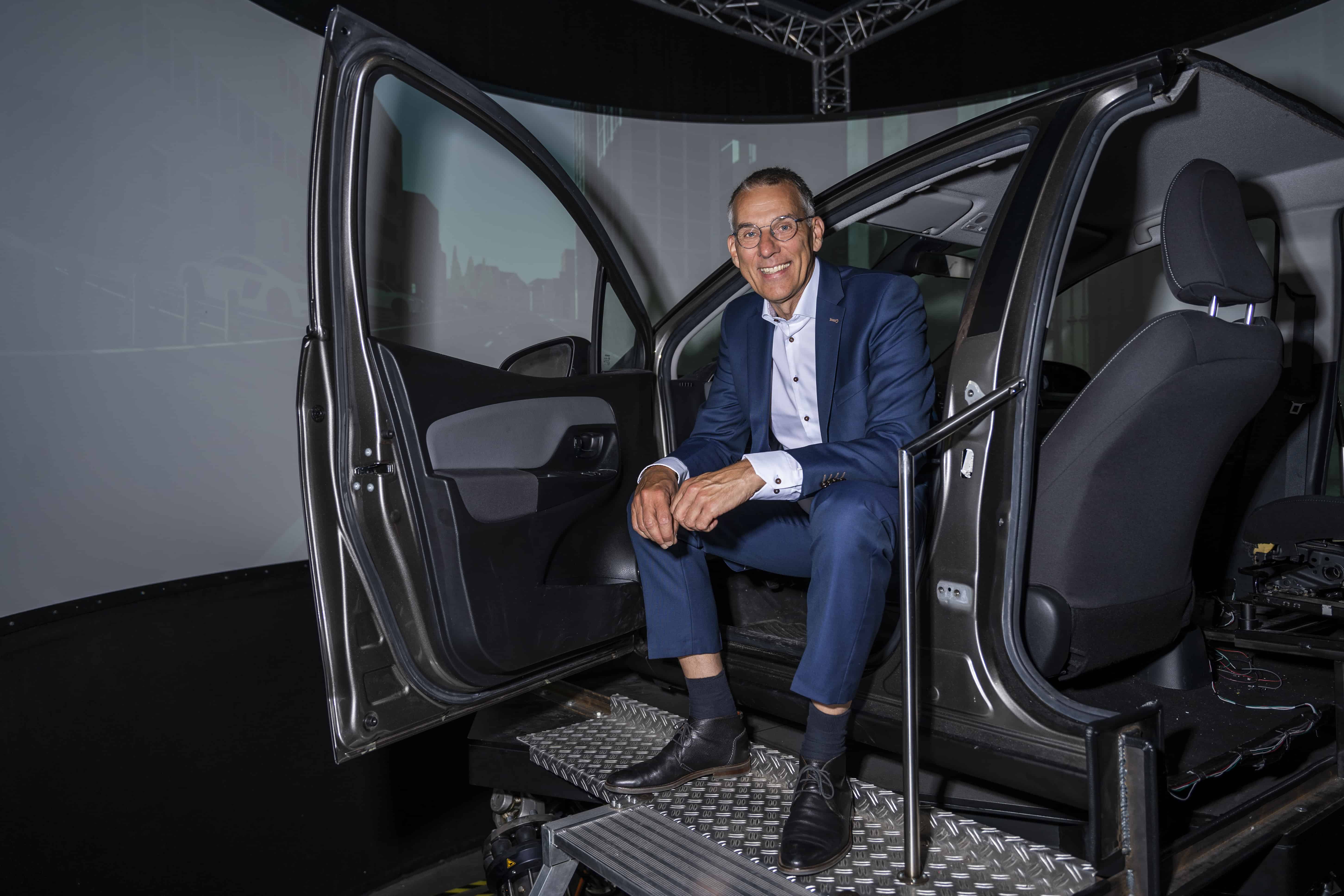
Autonomous cars still have quite a few bumps to overcome. The technical, financial, and societal ones have been discussed many times by now. That is not true of a more medical implication of autonomous vehicles: they cause car sickness. In his inaugural address to TU Delft, Prof. Riender Happee elaborated.
Self-driving cars have great potential for providing safe, comfortable, and sustainable transportation. And transportation where you can use the travel time to work. The developments are not stopping. For example, In San Francisco, you can already order a self-driving cab. Yet there are still several obstacles to overcome before self-driving cars will really be accepted by the general public, and travel time can really be spent differently.
Self-driving car sickness
“A high level of comfort in autonomous cars is crucial for acceptance,” said Prof. Riender Happee of Delft’s 3mE faculty. “That comfort is necessary to benefit from the very advantage of self-driving cars: that you can take your eyes off the road during your journey and have your hands, literally, free for other activities, such as reading.”

This is precisely why attention to self-driving car sickness is so important, he says. “Car sickness occurs mainly when passengers take their eyes off the road. My research, therefore, focuses largely on how to explain and prevent car sickness in self-driving cars.”
Driving to nausea
The leading theory of car sickness is that of “sensory conflict”. This assumes that car sickness occurs because there is (a lot of) a difference between what you experience in motion and what you expect in motion (and acceleration). “Fortunately, you can mitigate this conflict in many ways. For example, in simulations and experiments, where we literally drive people to nausea, we already achieve a 50 percent reduction in car sickness. This can be done by adjusting the driving style and taking corners less quickly, for example, but you can also think about active suspension or adjusting the seat. A very different approach is acceptance. Then you simply give a warning when you know an extra tricky stretch is coming up, with lots of turns or city traffic: ‘Now just take your eyes off your screen for a moment and focus on the horizon’.”
Individual differences
Incidentally, with car sickness, there are big differences from one individual to another. Some people get carsick quickly; others (almost) never suffer from it. These individual differences are also part of Happee’s research, which is leading the world in the field of (modeling) driving comfort.

“All in all, many factors play a role in car sickness,” notes the new professor. “In the next few years, we want to develop further and integrate biomechanical models of the human body, the perception of motion, and the occurrence of car sickness, giving us an even better picture of the processes involved in the development of car sickness. With these models and the underlying understanding, we will be able to design self-driving vehicles much more effectively, considering conditions, tasks, and individual differences.”

